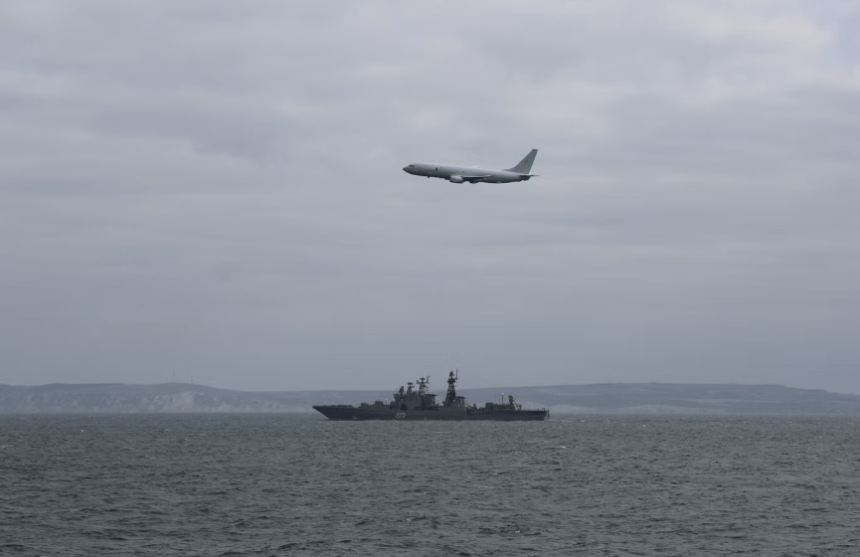In a significant show of strength, Britain and Germany are stepping up joint military efforts to counter the growing threat of Russian submarines near NATO’s borders.
Aircraft from the Royal Air Force (RAF) and Germany’s Deutsche Marine will now fly side by side in patrols launched from RAF Lossiemouth, intensifying maritime defences across NATO’s Northern and Eastern flanks.
UK-German Military Pact Targets Russian Sub Threat
This strategic collaboration marks a deepening of defence ties between the two allies, extending beyond the skies and into the digital battlefield.
“A year on from the Trinity House Agreement, the UK and Germany are working closer than ever to keep our two countries and Europe safe.
Together we’re strengthening NATO, boosting our cyber defences, and ensuring our armed forces can operate side by side with ease from patrolling the skies over Scotland to hunting Russian subs in the North Atlantic,” said Defence Secretary John Healey.
Submarine Hunters in the Sky
Thursday will see both Mr Healey and German Defence Minister Boris Pistorius board an RAF Poseidon P-8A maritime patrol aircraft at RAF Lossiemouth.
The aircraft, designed to detect, track and defend against hostile submarines and warships, will demonstrate its powerful capabilities during an operational flight.
This moment also commemorates the first anniversary of the Trinity House Agreement – a pivotal defence accord signed to strengthen UK-German military cooperation.
In a powerful move against Russia’s maritime presence, Britain and Germany have joined forces to send submarine-hunting patrol jets into NATO airspace. With new cyber warfare ties and defence investments in motion, the partnership signals a turning point in Europe’s security landscape.
Cyber Command: A New Frontline
The next stage of the Trinity House initiative brings the fifth Trinity House Lighthouse project into play – a joint cyber warfare development between the UK’s new Cyber and Specialist Operations Command (CSOC) and Germany’s Cyber and Information Domain Service.
Their mission? Secure, real-time data sharing with NATO forces while defending critical infrastructure from increasingly sophisticated cyber attacks.
A core element of this operation is the rollout of a secure, shared cloud-based digital network – a vital tool for intelligence collaboration and rapid response to cyber threats.
German P-8A to Land on UK Soil
In the months ahead, a German Navy P-8A aircraft will make its first official visit to RAF Lossiemouth. This signals the beginning of routine, collaborative missions with the RAF in the North Atlantic, where Russian submarine activity continues to pose challenges to NATO maritime security.
Major German Defence Investments in the UK
Beyond the skies and cyberspace, the UK’s defence industry is seeing a powerful injection of German investment:
- £800 million committed from German firms since 2023.
- 600 new jobs to be created across Britain.
- A new Rheinmetall facility in Telford will revive artillery barrel manufacturing in the UK for the first time in over ten years, powered by British steel from Sheffield Forgemasters.
Three more German defence tech companies, Helsing, ARX Robotics, and Stark, have also announced major UK-based projects:
- £350 million in AI-driven maritime glider drones.
- £45 million for unmanned drones, bringing an additional 190 high-skilled jobs.
A Stronger NATO, A Safer Europe
The UK-Germany alliance underscores a growing urgency to modernise Europe’s defence and stand firm against threats from the East.
“This partnership is a cornerstone of European security, demonstrating unity and strength to our adversaries, and keeping us secure at home and strong abroad,” added Mr Healey.
From undersea surveillance to cyber command centres, the message from Britain and Germany is clear: NATO’s defences are not only united, they’re evolving fast.






